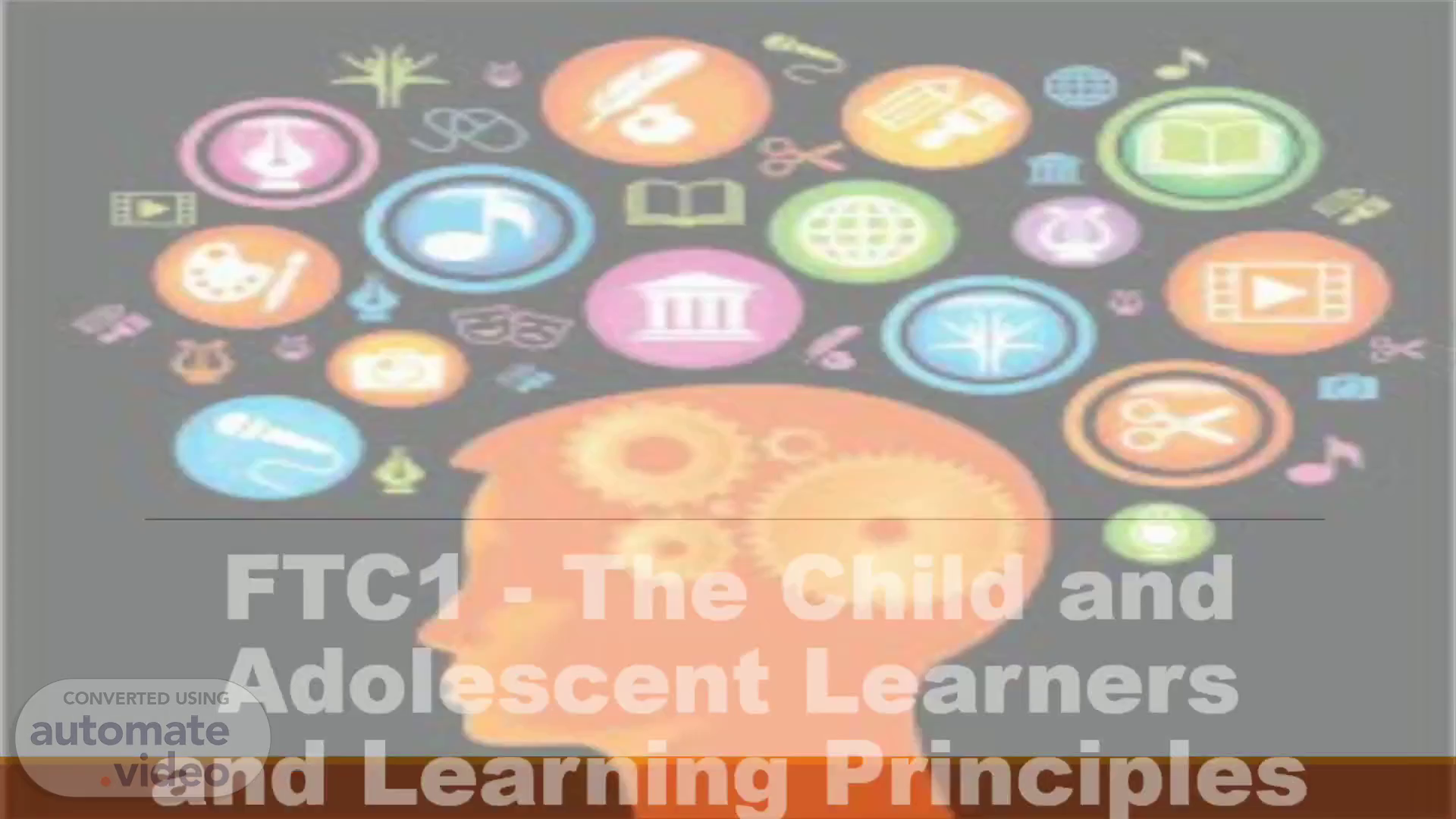
FTC1 - The Child and Adolescent Learners and Learning Principles
Scene 1 (0s)
[Audio] Good evening! Welcome to PRMSU. For today's meeting we will have the Orientation. Our course is FTC1 - The Child and Adolescent Learners and Learning Principles. Questions and other concers will be entertained after the presentation..
Scene 2 (20s)
[Audio] For our University Vision President Ramon Magsaysay State University as premier learner center and proactive university in a digital and global society..
Scene 3 (32s)
[Audio] University Mission The President Ramon Magsaysay State University shall primarily provide advance and higher professional, technical, special instructions in various disciplines; undertake research, extension, and income generation programs for sustainable development of Zambales, the region, and the country..
Scene 4 (55s)
[Audio] Quality Policy The President Ramon Magsaysay State University is committed to continually strive for excellence in instruction, research, extension and production to strengthen global competitiveness adhering to quality standards for the utmost satisfaction of its valued customers..
Scene 5 (1m 13s)
[Audio] FTC 1 - The Child and Adolescent Learners and Learning Principles Course Description This course focuses on child and adolescent development with emphasis on current research and theories on biological, linguistic, cognitive, social and emotional dimensions of development. Further, this includes factors that affect the progress of development of the learners and appropriate pedagogical principles applicable for each developmental level of the learners. The course also addresses laws, policies, guidelines and procedures that provide safe and secure learning environments, and the use of positive and non-violent discipline in the management of learner behavior..
Scene 6 (1m 56s)
[Audio] Credit Units - 3 units (lecture) Contact Hours per Week - 3 hours lecture Place of CourseIn the Program - Professional Education Course Learning Approach and Delivery Mode Online Approach Synchronous - Videoconferencing Asynchronous - LMS.
Scene 7 (2m 22s)
[Audio] COURSE INTENDED LEARNING OUTCOMES (CILOs) By the end of the course, the students will be able to: CILO 1 demonstrate content knowledge and its application within and /or across curriculum teaching areas; CILO 2 demonstrate an understanding of the different research-based theories related to the broad dimensions of child and adolescent development and their application to each particular developmental level of the learners;.
Scene 8 (2m 51s)
[Audio] COURSE INTENDED LEARNING OUTCOMES (CILOs) CILO 3 demonstrate understanding of pedagogical principles suited to diverse learners' needs and experiences at different developmental levels; CILO 4 demonstrate knowledge of laws, policies, guidelines and procedures that provide safe and secure learning environments; and CILO 5 demonstrate knowledge of positive and non-violent discipline in the management of learner behavior..
Scene 9 (3m 24s)
[Audio] GRADING SYSTEM Class Standing Quizzes/Activities – 35% Participation/Attendance/Recitation- 15% Major Exams (Major Exam – Written or Performance) – 30% Project (Scrapbook/Video Presentation/Outreach Program) – 20% TOTAL 100%.
Scene 10 (3m 53s)
[Audio] Here are the references.. 1. Corpuz, B.B., Lucas, M.R.D., Borabo, H.G.L., & Lucido, P.I. (2018) The Child and Adolescent Learners and Learning Principles. Lorimar Publishing, Inc, Quezon City, Philippines. Corpuz, B.B., Lucas, M.R.D., Borabo, H.G.L., & Lucido, P.I. (2015) Child and Adolescent Development. Lorimar Publishing, Inc, Quezon City, Philippines. 2. Lucas, Ma. Rita D. & Corpuz, Brenda B. (2014) Facilitating Learning: A metacognitive process. Lorimar Publishing, Inc, Quezon City, Philippines. 3. UN-OHCHR (n.d.) 1989 Convention on the Rights of the Child. UN Office of the High Commissioner for Human Rights. Retrieved from https://www.ohchr.org/Documents/ProfessionalInterest/crc.pdf 4. Presidential Decree No. 603 (1974) The Child and Youth Welfare Code of the Philippines. Retrieved from https:// www.pcw.gov.ph/law/presidential-decree-no-603.
Scene 11 (4m 42s)
[Audio] Here are the references.. REFERENCES. 5 . Republic Act No. 7610 (1992) Special Protection of Children Against Abuse, Exploitation and Discrimination Act. Available online: https://www.pcw.gov.ph/sites/default/files/documents/laws/republic_act_7610.pdf 6. Department Order No. 40, series of 2012 – Child Protection Policy. Available online: http://www.deped.gov.ph/wp-content/uploads/2012/05/ DO_s2012_40.pdf 7. Department of Education (2015) – Positive discipline in everyday teaching: A primer for Filipino teachers. Available online: https://bulacandeped.com/wp-content/uploads/2016/08/POSITIVE- DISCIPLINE-IN-EVERYDAY-TEACHING-A-Primer-for-Filipino-Teachers.pdf.
Scene 12 (5m 16s)
[Audio] Thank you! You can now ask questions and clarifications regarding our course..